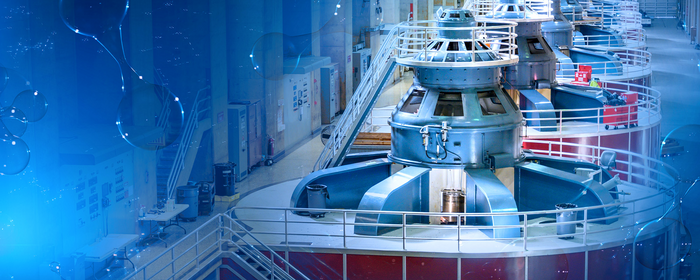Idaho Power has teamed with Idaho National Laboratory and Pacific Northwest National Laboratory to assess the feasibility and benefits of producing hydrogen at existing hydropower plants.

Image Credit: Idaho National Laboratory
Integrating hydrogen production with hydropower can increase grid stability through energy storage, reoxygenate water for downstream environmental advantages, and aid in Idaho's decarbonization efforts. This collaboration’s data, models, and analysis will aid in determining the viability of hydropower and hydrogen integration for Idaho and sites across the United States.
INL and PNNL will evaluate the coupling of electrolytic hydrogen production technologies with hydropower plants to identify scenarios that could help Idaho Power achieve its goal of providing 100% clean energy by 2045.
Brett Dumas, Director, Environmental Affairs, Idaho Power
This strategy will aid in making the best use of the clean energy generated by Idaho Power's 17 hydroelectric power plants.
The Benefits
The majority of renewable energy-producing methods face the issue of variable power output. Hydropower produces more consistently than other renewable energy sources, and increasing hydrogen production can boost flexibility by assisting in the balance of wind and solar generation. This is especially important during peak electricity usage hours.
Furthermore, hydrogen from excess hydropower electricity can be turned back into electricity when needed. This alternative would be incredibly beneficial during peak hours when hydroelectric electricity may not be readily available, assisting in meeting energy demand while reducing dependency on nonrenewable power generation. This method gradually levels the energy supply, reducing the demand for extra power generation from outside the hydropower plant.
“By capturing the off-peak energy production as hydrogen, the hydrogen can be re-electrified during peak energy demand,” states INL’s Daniel Wendt, Principal Investigator and Researcher on the project.
Storing hydrogen as a fuel could help stabilize the grid and provide a more environmentally friendly alternative to fossil-fuel backup power generation. This technique may provide electrical system operators with additional flexibility in ensuring reliable and cost-effective service.
Excess oxygen created as a byproduct of hydrogen synthesis could potentially help to improve river water quality. Dissolved oxygen levels in reservoirs behind dams may be low, especially throughout the summer and early fall. Fish and other aquatic animals require dissolved oxygen in rivers.
Researchers from INL and PNNL will assess the feasibility of reoxygenating water in rivers with hydropower facilities utilizing extra oxygen generated during the hydrogen generating process.
Idaho Power is already seeing positive results from adding oxygen into the water flowing out of Brownlee Dam in Hells Canyon.
Brett Dumas, Director, Environmental Affairs, Idaho Power
Making It a Reality
INL, PNNL, and Idaho Power are investigating the economic and environmental consequences of integrating hydrogen generation with hydropower as the first step toward realizing these benefits. The project team will provide advanced modeling and analytical tools to investigate several deployment scenarios and maximize the benefits of hydropower-based hydrogen production.
“To effectively schedule hydrogen production, advanced modeling, and optimization techniques are required to account for both energy shifting opportunities and oxygen needs subject to both system- and component-level constraints,” comments Di Wu, a Chief Research Engineer and the Technical Lead at PNNL.
INL researchers will employ a Department of Energy software tool that has been shown to be effective in the techno-economic evaluation of various hydrogen production and usage applications. Hydrogen Analysis (H2A) is a tool that can conduct screening assessments of the most promising electrolysis technologies and hydrogen use cases. H2A gives the user access to all calculations as well as the ability to view intermediate outcomes.
PNNL researchers will use the screening study data to model and optimize the hydrogen production system. INL and PNNL researchers will use the Hydrogen Energy Storage Evaluation Tool and data analysis to decide how to deploy the optimal set of technologies to obtain the best performance.
“While hydropower and hydrogen both offer immense economic and environmental benefits on their own, combining their use in one application offers new opportunities for enhancing grid stability, improving environmental outcomes, and creating a cleaner energy economy,” Wendt concludes.